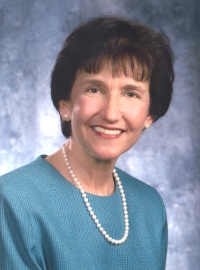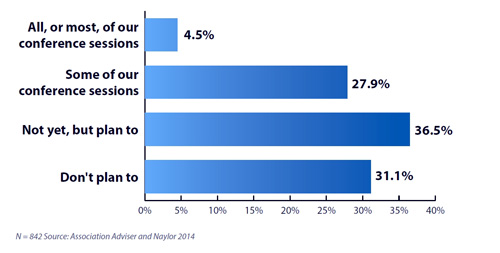Keys to Making It Through 2015

It’s going to be a fast-moving, bumpy, exciting year. Strap in tight. Enjoy the ride and bag yourself a BHAG.
As regular readers know, we tend not to make grand predictions for the year ahead or tell you how to set (and stick to) your New Year’s resolutions. Whether you’re an executive director, board member, membership director, communications specialist or event planner, goal-setting (and adherence to those objectives) should be an ongoing process, not a once-a-year exercise. We like to think of Association Adviser’s weekly and monthly posts, articles and videos as a way of helping you “gut check” your progress against those goals.

One thing we can tell you is that 2015 will be a volatile year. The word volatility comes from the Latin root volalis, “fleeting, transitory, flying.” Karl Ely, SVP of Publishing for the American Society of Association Executives, said there’s a “shifting landscape” for association folks. Like most associations, he said his organization is “coming to terms with the way members are consuming content and the realization that we need to shift our platforms into the places that members and non-members want to be delivered that content.”
As Naylor Managing Editor Carter Davis explains in his guest column today, “I don’t think that print is going away anytime soon. The ones who have consistently kept the presses rolling (and will continue to do so) are those who have developed a long-term strategy for ensuring print’s relevance while simultaneously embracing digital formats. There’s no reason why both mediums can’t coexist.”
![]()
Goal-setting should be an ongoing process, not a once-a-year exercise.
If your organization doesn’t have a BHAG (Big Hairy Audacious Goal) that you can see, feel and attack, you’re probably not making progress.
There’s no lack of ideas at most associations. The challenge is sustaining them and assigning the right resources and measurements to them.
Some of the best ideas come from the quietest voices in the room, not the loudest.
Another part of the shifting landscape that Rita Chen Fujisawa, CAE, sees is in the type of messaging that associations are sending to members. Fujisawa, who’s the COO of the California Association of Health Facilities (CAHF), said you have to do more than just provide members with news. “You can’t just tell members what it is—you need to tell them it impacts their lives in the business world and we as an association can help them.”
The Power of 10X and BHAGs

Gary Klaben, a Chicago-based financial advisor who counsels affluent families and not-for-profits about investing and philanthropy, told me the other day that it’s easy to get complacent when everything is easy and running smoothly. Two opposite human emotions—fear and desire—are constantly at play. “It might be fear of failure throughout one’s life. But, if your desire is greater than your fear of failure, then you’re willing to learn new things, tackle your fears (including fear of failure) and progress takes place,” observed Klaben.
When you look at your organization, if you don’t have a 10X Goal™ or a BHAG (Big Hairy Audacious Goal) that you can see, feel and really go after, then Klaben argued you’re probably not experiencing consistent progress. When we write goals down and really paint the picture of the future we want, Klaben said, “we sharpen our focus so it is only on those things that will get us to our goals. Everything else falls by the wayside.”
Are You Getting Too Much Email … or Just Over-Responding?
Let’s start with notion of information overload and communication clutter. That’s been the No. 1 communication headache for associations three straight years according to our annual Association Communication Benchmarking Survey. However, new research suggests we’re not necessarily getting too much email (and text messaging)—it’s that we’re checking it too often and feeling compelled to respond to it ASAP. We’ve known for years that email addiction leads to stress and unhappiness. Now, researchers are finding that there can be positive benefits to ignoring, or at least delaying, your response to email. That’s significant because three-fourths of workers in a recent study said they respond to emails within one hour of receiving them.
In a new study in Computers in Human Behavior, researchers took a group of workers and, over the course of two weeks, assigned each to one of two conditions: One group was told to keep their email program closed, turn notifications off, and check their email only three times a day, and the other was told to leave notifications on and check their email as often as possible. After the first week, each group switched into the other condition, and each group was regularly surveyed about how often they were checking their email, how stressed they were and how productive they felt.
Overall, “limiting the number of times people checked their email per day lessened tension during a particularly important activity and lowered overall day-to-day stress,” the researchers determined. Those who checked their email a lot also didn’t perceive themselves as any more productive than those who were on an email diet. Conclusion: Ceaselessly checking your email probably isn’t making you more productive, and it probably is making you more stressed.
Rethinking Engagement
One of the clients we work with has been doing a comprehensive set of member engagement surveys to measure satisfaction with their products, services, branding and communications. Nothing unusual there, except that it took more than 12 rounds of revisions for the organization to nail down the precise definition of the word “engagement” that has become a catch phrase in association-speak.
When it comes to member communication products, this association measures engagement by assessing how those products motivate members to (1) continue using that resource, (2) explore the association’s other resources, and (3) become more active with the association.
We also think that more associations will be using internal self-assessment tools, such as Engagement Multiplier, Strategic Coach, Halogen, Salesforce.com and SHRM resources among others, to measure the degree to which their staffs are truly engaged with their organization’s vision, their current leader’s vision, their own teams, their volunteers and their members.
Neither Naylor, LLC, nor AssociationAdviser.com has a commercial of financial interest in any of the products or solutions mentioned in this article.
Listen To the Quietest Voices In the Room
If you’re an introvert—or have lots of introverts on your staff—we have good news for you.
Results of our latest unscientific reader poll show that your peers believe some of the best ideas at their organizations can come from the quietest people in the room. About half (50 percent) of respondents strongly agreed with that statements, and the remaining 50 percent agreed to a certain extent. As Susan Neely, CAE, president and CEO of the American Beverage Association and Chair of the ASAE Foundation Board, told us recently “Listening is not only key to communicating, it’s critical to bringing people together and shaping good public policy.”
Jeff De Cagna, FRSA, FASAE, chief strategist of Principled Innovation, told us that you need to have a balance of both personality types on your staff and on your board. “Introverts draw their energy from ideas and critical thinking. Extroverts generate their energy from people. The 21st century [association] leader will have a skill set that is based on collaboration, listening and nurturing, rather than command and control,” said De Cagna, a frequent adviser to association boards.

According to Pamela Hemann, FASAE, CAE, President of Association Management Services, Inc. and Executive Director of Leadership California, “You really need to be a really good listener and aggregator of what you hear. It’s the ability to take all those opinions and the variety of things you see happening in the environment and pull them together in some meaningful pattern or trend.”
Scott Johnson, General Manager of Sono Field House, an indoor athletic training center in Norwalk, Conn., that does team-building exercises for corporations and not-for-profit organizations, said that one of the great lessons he learned in the military was that great ideas can come from anywhere on your team and in your organization. “It doesn’t matter if you’re a general, a sergeant or a private. Good leaders learn to listen to everyone for ideas. That’s not just valuable in the military, but in business and sports coaching.”
On the other hand, CAHF’s Fujisawa said she’s not a drill sergeant. “I want people to figure things out for themselves. My job is to be a coach or mentor who makes everyone else be successful.”
Evolution vs. Shiny Object Syndrome
Hemann said associations have more pressure to stay on the cutting edge than ever before. You need to stay on top of what’s happening, but you can chase every idea down or succumb to what Chris Williston VI of the Independent Bankers of Texas calls “shiny object syndrome.”
Sometimes, you just need to improve upon a legacy process or medium. Over the past eight years, Naylor’s Davis said he’s seen membership directories “evolve from primarily a print-only affair to a multifaceted project that incorporates the best elements of emerging and established technologies. Nearly all of the membership directories we produce are now complemented with a digital version, and an increasing number of them utilize an online verification system that allows members to update their data without the assistance of an association staffer.” According to Davis, this frees up resources on the association’s end while simultaneously allowing updated data to be fed into an online component of the directory.
Also look at your range of tenure on your staff. While organizations pride themselves on having low staff turnover, it can be detrimental to innovation, according to CAHF’s Fujisawa. Loyal staff can have long memories about failed initiatives, observed Fujisawa, who also serves on the steering committee for the ASAE’s Innovation Grant Program. Just because it didn’t work the first time we tried it, doesn’t mean it will never work. “I’ll ask them why it didn’t work last time and did they try it this way or that way. You need to show the team you’re excited about trying things. I love to brainstorm.”
Video
“For a lot of us in the association space, the [big] What’s Next is video,” explained ASAE’s Karl Ely. It’s a big opportunity. Video is not a replacement for print and digital, but an important complement [to those channels] with an added layer of personalization.
According to Aaron Weisberg, Naylor’s Sales Manager, Video Products, associations should simply take the technology piece “out of the picture” and really concentrate on what they want to do with video. “Technology and production providers are out there to assist associations with the ‘scary stuff’ so that the association can use the medium to its fullest potential.”
Hemann said video is not only a powerful way for associations to deliver news, information and best practices to members, it’s increasingly being used to make their live event content available to members who cannot attend events in person. Fujisawa said CAHF is using video to showcase the best practices followed by leading health care facilities and video [is idea] for sharing those best practices with our members. It’s also a very helpful medium for sharing professional education with members who can’t come to our live event.
According to the 842 association execs who responded to this question in our annual Association Communication Benchmarking Report, more than two-thirds (68.9 percent) are allowing, or planning to allow, non-attendees to experience their live events via live-streaming, recording or archiving.
To what extent does your association allow members to attend live events via live-streaming, recording or archiving?

Pamela Hemann agreed. “Video will play a role. You can’t do everything in person when trying to engage your audiences. It might be a video around your programming or video interviews with some of your leaders and members. It’s a large opportunity for us, but a big commitment of time and technology. The purpose and messaging will be the same as before—the difference is how you deliver it to your audience.”
Just remember to plan your videos in advance and pay attention audio quality and lighting, not just “nailing” your script. Video that’s done well can be an extremely effective tool for getting your message across. But if rushed or done poorly, your audience will penalize more severely than a botched effort from more conventional channels.
Conclusion
The word resolution has origins in the Latin root resolutionem, literally the “process of reducing things into simpler forms.” The more complex our world becomes, the more we need to keep things simpler. Send me a note any time if you’d like to share your success stories about how you’re doing that. We’ve got a lot to do it 2015. Let’s get after it.
Hank Berkowitz is the moderator-in-chief of Association Adviser eNews.

